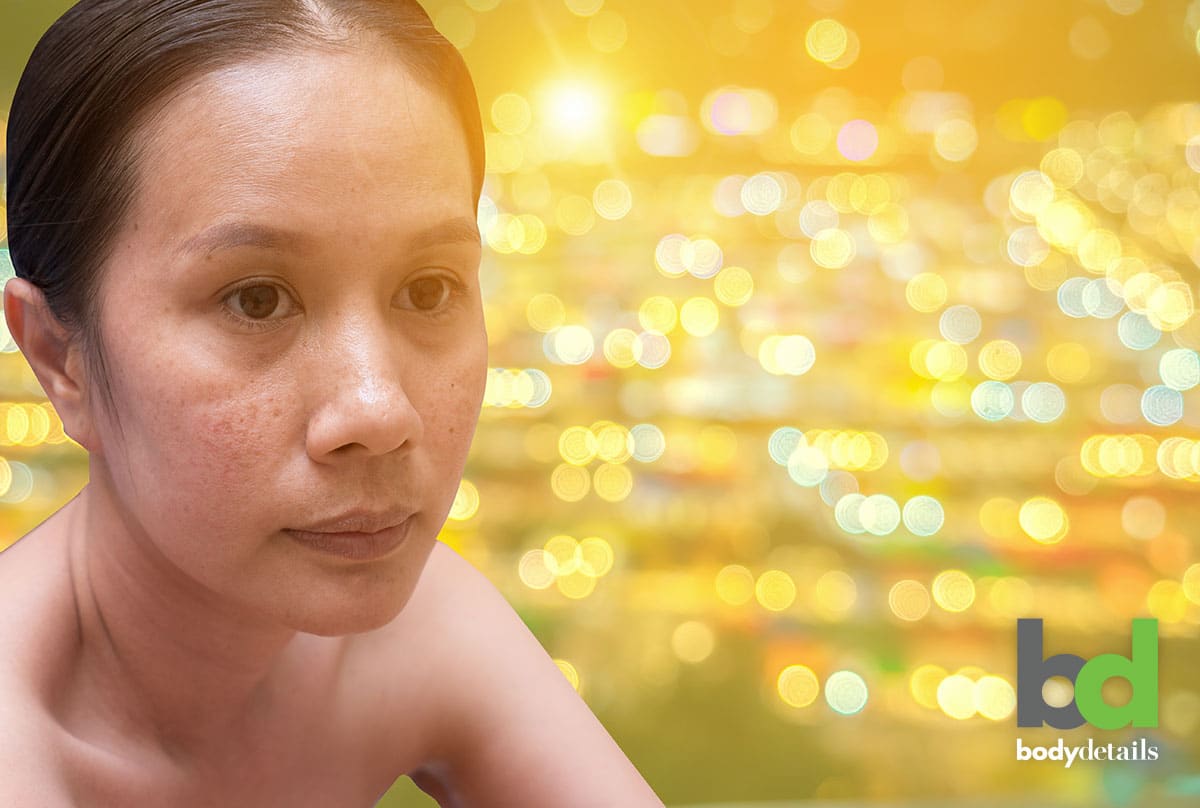When age and sun spots are getting in the way of showing off your natural complexion, the number of treatment options available may feel overwhelming. Creams, masks, facials, and other at-home remedies all promise to eliminate these imperfections, but rarely deliver on that promise.
Those that do work often risk causing more damage to the skin, as they contain harsh chemicals and bleach. If you’re guilty of caking on your foundation simply to cover up skin discoloration, then a photofacial might be in your future. With this quick and simple laser procedure, you’ll not only see results right away, but you won’t have to take time off from your busy schedule to allow your face time to heal. There’s no downtime, and laser sessions rarely take more than 20 minutes. If you suffer from skin discoloration, continue reading to learn more about these skin conditions and your treatment options.
How Do Sun Spots Form?
As their name would indicate, sun spots develop from too much exposure to UV rays. Sun damage will first appear on the skin as freckles, which tend to fade in just a few hours. This damage, however, remains in the deeper layers of the skin and will eventually resurface.
Over time, the freckles that appear when you’re outside will take longer to fade away, and when enough damage has occurred, they will no longer fade and will appear on the skin’s surface as clusters of dark pigmented skin. They will not fade on their own and require treatment to be eliminated.
How Do Age Spots Form?
While it’s unknown exactly what the cause of age spots is, it is known that age spots are enhanced by sun damage, similar to sun spots. The difference is that age spots will develop when we’re older, and our skin has lost the ability to control its levels of melanin. At this time, our skin becomes more sensitive to UV rays, and will no longer be able to prevent sun damage from occurring. Age spots are found most often on the face, neck, chest, shoulders, and hands.
What Is A Photofacial?
Like most facials, a photofacial is designed to improve the appearance of the skin. It differs from other facials in that lasers are used rather than a cream or other solution to eliminate imperfections. Lasers are able to target the deep layers of the skin, areas where no spa facial can reach.
Using fractional lasers, a licensed medical laser technician is able to target the areas of your skin where sun and age spots have appeared. By creating microscopic wounds, the body naturally works to heal itself by eliminating the damaged skin cells and replacing them with new ones. These new skin cells are without age and sun spots, so they significantly reduce the appearance of imperfections on your skin.
Photofacials don’t just work to eliminate age and sun spots; they can be used to reduce the appearance of any of these imperfections:
- Fine lines
- Wrinkles
- Acne marks
- Scars
- Large pores
- Uneven skin tone
- Rosacea
- Sun spots
- Age spots
- Loss of skin elasticity
- Broken capillaries
Disadvantages of Other Treatments
Often when people experience sun spots for the first time, they try creams and lotions to help fade the marks. These creams, while harmless, will take a long time to produce results, if they do at all. However, some of these creams contain bleach, which can cause redness, itchiness, and severe skin irritation. Bleach can also cause further skin discoloration if your skin tone is naturally tan or dark.
Other treatment options require the removal of the outer layer of the skin in order to fade sun and age spots. This includes chemical peels, dermabrasions, and microdermabrasions. Chemical peels require the use of acid to eliminate the first few layers of the skin. They can be done in different degrees of harshness, depending on the severity of your skin’s imperfections. As the skin heals and new skin develops, age spots, sun spots, and other skin imperfections will be less visible. A mild chemical peel can be done without much irritation or side effects, however, the stronger the chemical peel is, the more likely it is that you’ll require time off from work to heal.
Dermabrasions and microdermabrasions are the sanding down of the skin, also removing outer layers so that healthier, flawless skin will grow in. This is done with a rapidly rotating brush that works to eliminate dead skin and the layers of the skin where imperfections reside. While microdermabrasions tend to be on the gentler side, they don’t exactly provide fast and simple results. Dermabrasions are harsher, removing more layers of the skin so that age and sun spots will fade faster. However, they will cause more irritation, redness, and scabbing during the healing process.
Why to Choose Photofacials Over Other Treatment Options
There are several benefits of photofacials that other treatment options just don’t provide. Since this is a noninvasive procedure, there are little or no side effects after your laser treatments. For this reason, there’s no need to take off from work or plan for any downtime at all. While several treatments might be needed to get the results you’re looking for, you will notice a difference right away. Your imperfections will continue to fade long after your laser treatment.
Check out how photofacials are done in this video where 2015’s Miss Universe Bahamas Toria Nichole gets her first treatment:





